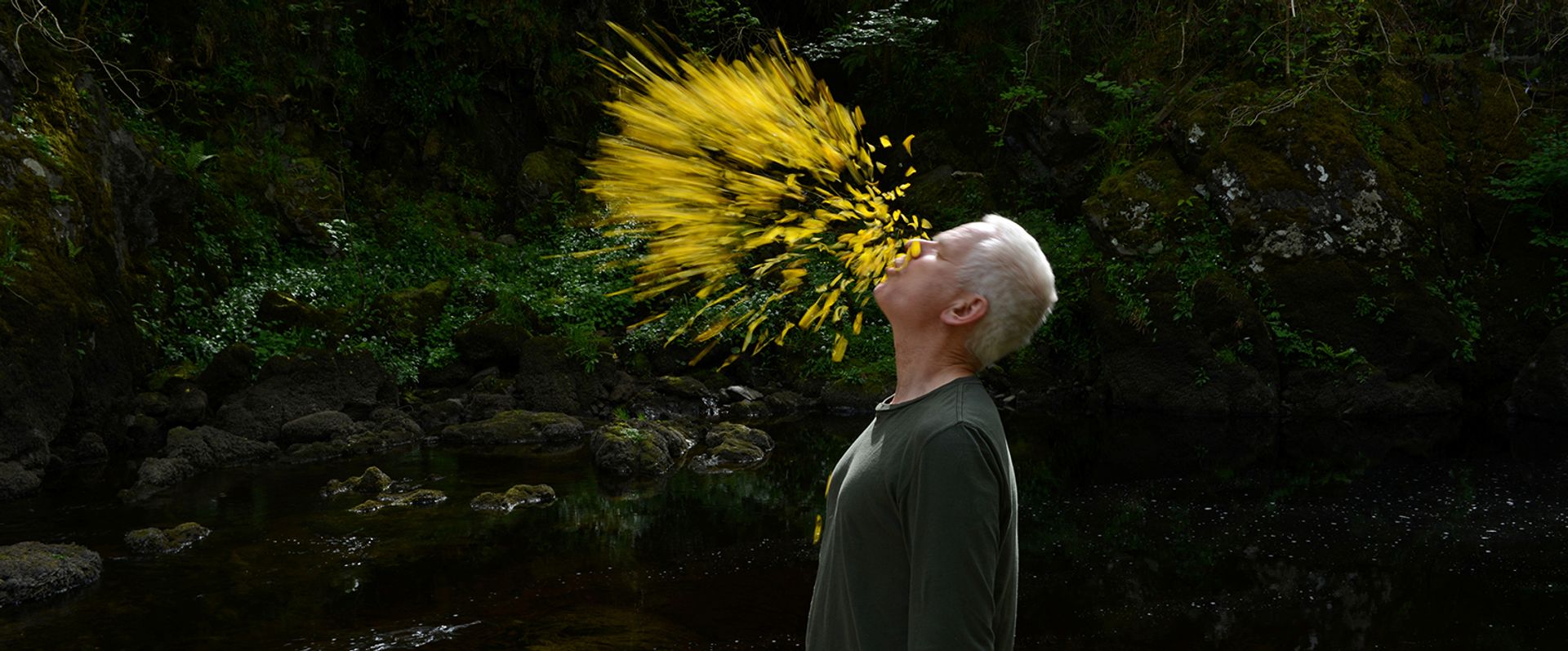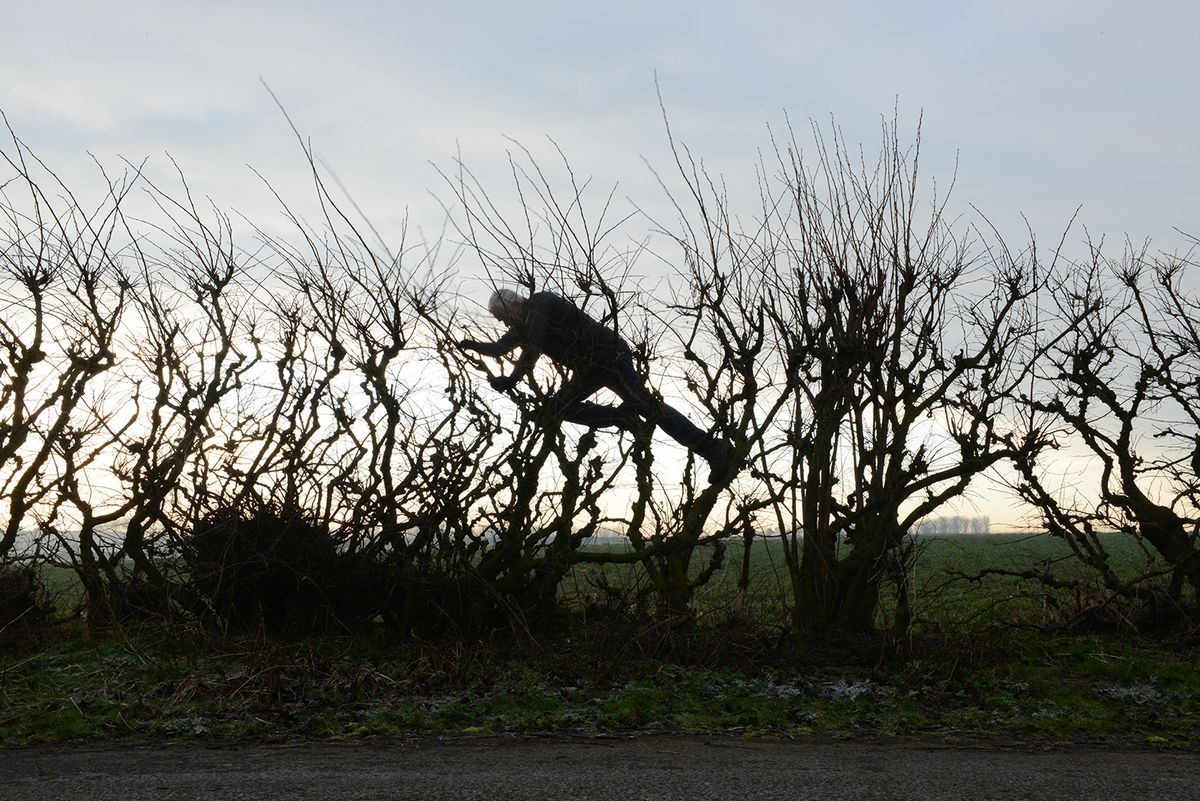Leaning Into the Wind, a new documentary currently showing at New York’s Film Forum, is a reprise of the collaboration between the artist Andy Goldsworthy and the film-maker Thomas Riedelsheimer. It is a documentary on documentation, with Goldsworthy, now 61, narrating a journey through his working process and his relationship with nature and materials—stone, water, wood and earth—starting in Brazil and passing through Dumfriesshire (Scotland), New Hampshire (USA), and other places where he has worked.
The artist’s voice is gentle as he watches water flow and feels the wind against his body, but he insists firmly that his artistic training was no more important to him than the physical experience of farm work. He stresses that his tactile connection to nature, even on the stones of city streets, is essential to the way he works. Lest anyone forget that Goldsworthy is an artist who gets his hands dirty, we see him doing just that at regular intervals with dust, mud, clay and flower petals.
That description may sound like a checklist of New Age sensitivity—which Goldsworthy might not dispute—but his previous film with Riedelsheimer about working in and with nature, Rivers and Tides (2001), connected profitably with a huge audience worldwide, picking up plenty of awards along with way. That kind of success has eluded most films by and about artists.
The language of Leaning Into the Wind is similar to that of Rivers and Tides, not just in Goldsworthy’s gentle voice, but in the film’s observation of sites and how the artist makes his mark on them, creating works which tend to vanish after a brief appearance.

Andy Goldsworthy in Leaning into the Wind, a Magnolia Pictures release Photo courtesy of Magnolia Pictures © Thomas Riedelsheime, all rights reserved
In one such approach, which becomes a leitmotif in the documentary, Goldsworthy lies down in the rain (of which there is plenty in Scotland) and then rises to reveal the silhouetted outline of his body, the most basic rendering of the human form. He does this on paving stones in an urban parking lot in Scotland as cars drive by and in rural fields. The cinematic drama intensifies when this act of self-stencilling is observed from above, although it is never clear how the shot is achieved, whether by drone, or crane, or some other camera technique.
Just as dramatic are clouds of yellow leaf fragments or flower petals that Goldsworthy spits from his mouth, but when shown in slow motion, appear to be suspended in the air.
There is even humour in Leaning Into the Wind, as Goldsworthy climbs horizontally through thick tree branches like a figure from medieval folklore. On an urban street, he does the same in a cluster of thick bushes, emerging in front of unsuspecting pedestrians after the vegetation shakes loudly.
In a Brazilian home, Goldsworthy learns the technique (which he’ll use elsewhere) of making a floor with clay, hair and bull manure. His dutiful translator calls that last material “bullshit”. Goldsworthy, smiling, is content to include that term in his natural world.
• Leaning Into the Wind: Andy Goldsworthy, directed by Thomas Riedelsheimer, 1h 33m, in select theatres in the US


